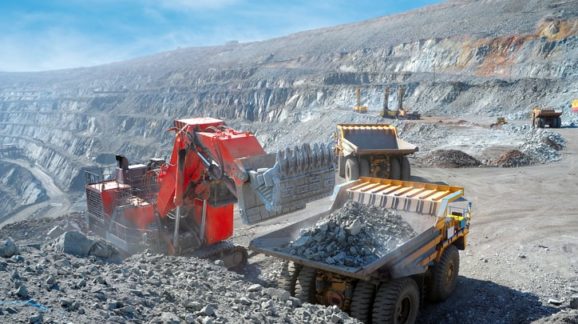EPA Removes One Hurdle to Alaska’s Pebble Mine, but Others Remain

 On May 28, the Environmental Protection Agency (EPA) notified the U.S. Army Corps of Engineers that it will not challenge its ongoing review of the Pebble Mine in Alaska at this time. Thus, the Army Corps can continue reviewing the project’s Environmental Impact Statement (EIS) pursuant to the National Environmental Policy Act (NEPA). The EIS review and subsequent final decision on the mine permit are expected by the end of the year.
On May 28, the Environmental Protection Agency (EPA) notified the U.S. Army Corps of Engineers that it will not challenge its ongoing review of the Pebble Mine in Alaska at this time. Thus, the Army Corps can continue reviewing the project’s Environmental Impact Statement (EIS) pursuant to the National Environmental Policy Act (NEPA). The EIS review and subsequent final decision on the mine permit are expected by the end of the year.
The Pebble Mine, located in the Bristol Bay region of the state, has the potential to be America’s largest new mine in decades, holding vast quantities of copper, gold, and molybdenum as well as critical rare earths. Construction jobs on the project may reach into the thousands, and subsequent mining jobs well into the hundreds, and in a part of the state that really needs them.
The mine could not come at a more vital time for Alaska’s state budget. The state is heavily dependent on oil revenues, which have plummeted thanks to the coronavirus lockdown as well as other factors. Prices are unlikely to rise significantly in the foreseeable future, thus continued state budget shortfalls are expected. The mine would be a good step towards diversification away from oil, while putting many otherwise unemployed Alaskans to work in high-paying jobs and generating additional state and local tax revenues.
The EPA explains in the letter that it is deferring to Army Corps because the latter has demonstrated that it is conducting an open and fair analysis of the mine and its environmental impacts—in contrast to mine opponents who have overhyped allegations of risk to Alaska’s salmon fishery. The EPA’s focus is on compliance with the Clean Water Act and notes that Army Corps continues to be responsive to its concerns, thus the agency believes no second guessing is necessary.
The coordination between the Trump administration EPA and Army Corps stands in stark contrast to that under the Obama administration, when the EPA abused its authority under the Clean Water Act to unilaterally block the project before the Army Corps had even begun its assessment. The agency did so by compiling its 2014 Bristol Bay Watershed Assessment that was stridently anti-mine but suffered from numerous flaws. Most significantly, it was completed before the mine developers had submitted a mine application and thus was completely speculative.
The Obama EPA ignored concerns raised by Army Corps that “at this time, the Corps has not received a permit application for this project and is therefore unable to evaluate the impacts of potential discharges associated with the Pebble Deposit,” and that it “has not yet begun the public interest review and evaluation process, and it would be premature to submit any information for the record at this time.” It is unheard of for a decision to be made on such a project without participation from the Army Corps of Engineers.
Based on the Bristol Bay Watershed Assessment, the EPA proposed in 2014 to reject the mine, but in 2019 the agency withdrew this proposed action that had been hanging over the Army Corps’ process. It should be noted, however, that the EPA chose not to withdraw the underlying Bristol Bay Watershed Assessment, and has yet to make good on its 2018 promise to propose a rule forbidding such pre-emptive actions in the future.
With this letter, the EPA has effectively allowed the NEPA process to continue to its conclusion. However, there are still obstacles to be overcome. Most notably, environmental groups have already signaled that they will challenge the final EIS in federal court, and such NEPA litigation can drag things out for years. And, although unlikely, the EPA still has a chance to stop the project based on any objections it has to the final EIS. But for now, the Army Corps’ mine review process is moving ahead.